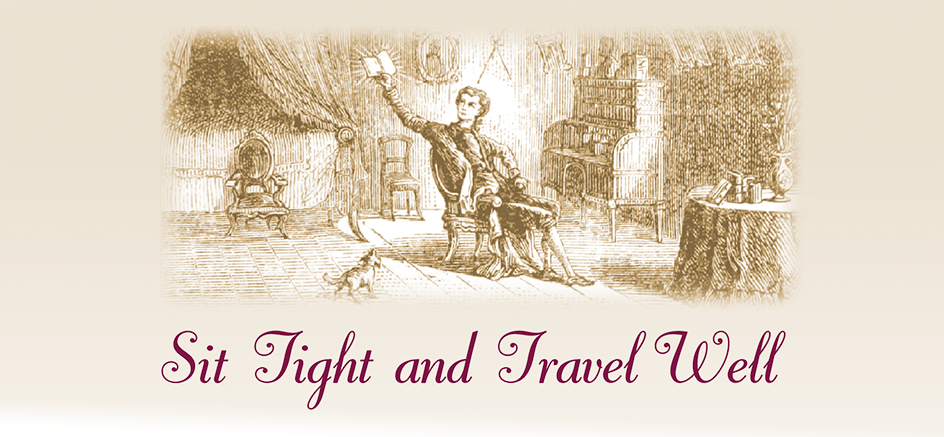

While many of us have been bitten by the travel bug over the past few years, it would not have been a problem for Xavier de Maistre, an 18th-century writer famous for writing guidebooks to his rooms.
De Maistre is probably one of the earliest armchair travellers. When placed under house arrest for 42 days after an illegal duel in 1790, the 27-year-old Frenchman decided to make a long-planned, first-of-its-kind adventure—wandering around his room. During his captivity, he was accompanied by his dog Rosine, and was allowed to ask his servant Joannetti to run errands for him. De Maistre took his trip seriously and kept a travel journal, which was later published under the title A Journey Around My Room.
In his dressing gown, de Maistre travelled from one piece of furniture to another, as if he were roaming from state to state. Like all good travel writers, he blends beguiling descriptions of the attractions—his desk, paintings, bookshelf—with meditations ranging from the ubiquitous gaze of a portrait to the fickleness of love, the value of friendship and the nature of man.
Through astute observation of his surroundings, de Maistre turned his six weeks of confinement into a journey of discovery and fulfilment. In admiring how the reflections of the morning sunlight formed a charming hue on his pink and white bed, he noticed the subtle yet sublime beauty in household items. While revisiting his collection of engravings and paintings on the walls, he was able to explore their themes more thoroughly and find moments of epiphany. After seeing how Joannetti bore the brunt of his foul temper without a grudge, he learnt to appreciate his servant’s tolerance and understood more about humanity.
Upon his release, de Maistre showed little joy or relief at his freedom; he felt himself “filled with a premonitory shudder”. Concluding his sedentary trip, he writes, “They have forbidden me to roam around a city, a mere point in space; but they have left me with the whole universe: immensity and eternity are mine to command.” His room tour was so rewarding that eight years later, he went on another one and wrote a sequel, A Nocturnal Expedition Around My Room.
De Maistre’s unique way of travel is recounted over two centuries later by Alain de Botton, a Swiss-born British author and philosopher, in The Art of Travel, a book which takes an artistic and philosophical look at the well-worn subject of travel. By drawing on his own disenchanting experiences on the road and the thoughts and titbits of notable figures in history, de Botton discusses people’s motives and penchant for travelling, its pitfalls and vagaries, and the irreplaceable role of art in opening one’s eyes to the beauty in the ordinary.
We all have the constant urge to be somewhere else, assuming that distance can separate us from the mundanity of everyday reality at home. Yet we are more often disappointed than satisfied. So how might we make it more enjoyable? De Botton draws inspiration from de Maistre’s explorations of his rooms. “The pleasure we derive from journeys,” writes de Botton, “is perhaps dependent more on the mindset with which we travel than on the destination we travel to.” He suggests that if we could adopt a travelling mindset, our own locales and neighbourhood would become more interesting. It is the lack of receptivity that leaves us “habituated and therefore blind”.
In other chapters of his book, de Botton discusses at length the receptive mind of explorers, thinkers and artists on the move. Among them are American realist painter Edward Hopper and English Romantic poet William Wordsworth. According to de Botton, Hopper’s works feature places of transience that too easily go unnoticed, such as hotels, gas stations and train carriages. As insignificant as they appear to be, these places are elevated in his paintings to become a symbol of loneliness. As for Wordsworth, his poems are inspired not by majestic views in exotic foreign lands, but by the most common flora and fauna in his native Lake District. In retracing their footsteps, de Botton shows us that a fruitful journey is not necessarily associated with far-flung places; it may start with the everyday objects around us as long as we can look at them with fresh eyes.
With the lifting of travel restrictions, it is now much easier to feed our travel bug. Still, we should not be too quick to forget the value of de Maistre’s and de Botton’s inspiring works. If we learn to find novelty in familiarity, we may eventually realise the meaning of travelling without leaving home.













